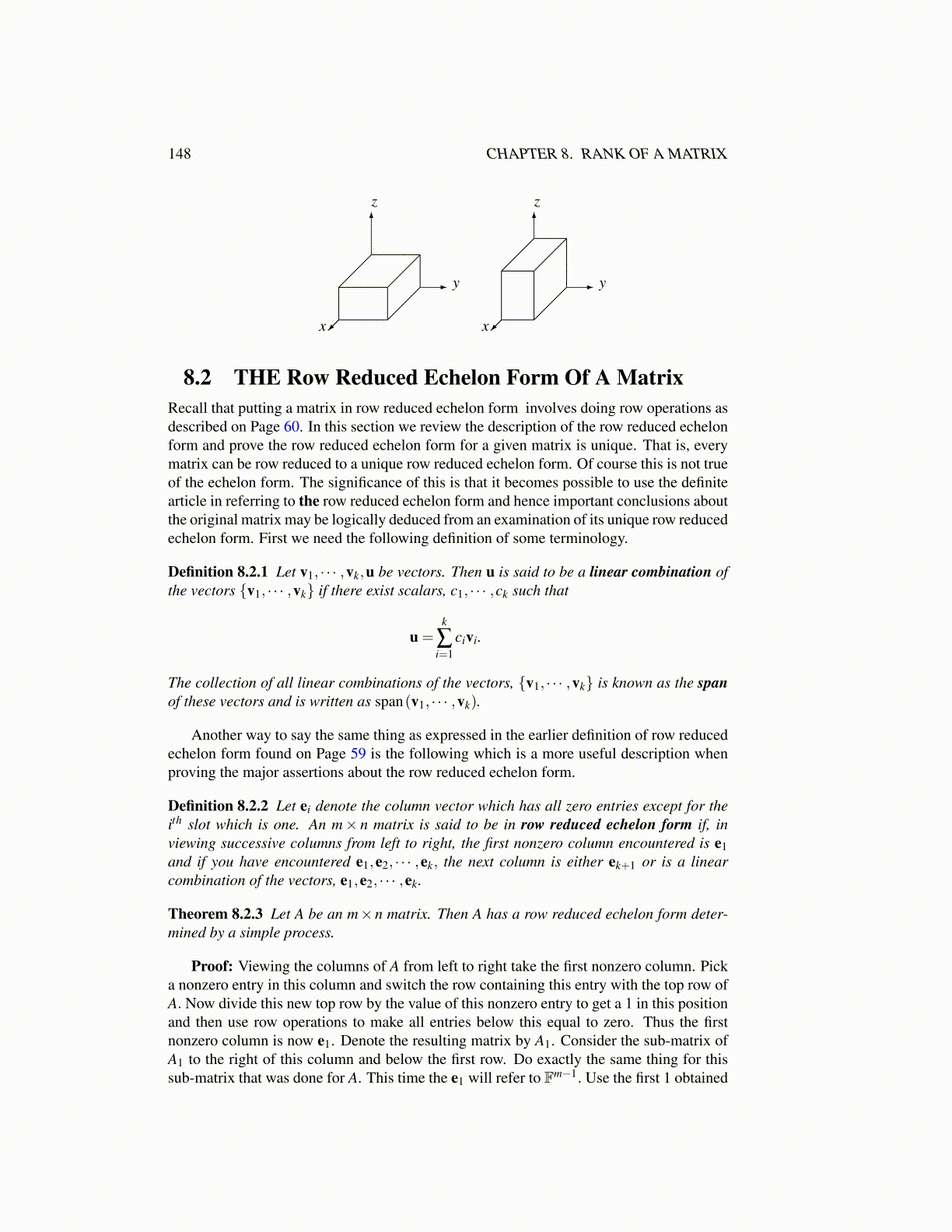
148 CHAPTER 8. RANK OF A MATRIX
x
y
z
x
y
z
8.2 THE Row Reduced Echelon Form Of A MatrixRecall that putting a matrix in row reduced echelon form involves doing row operations asdescribed on Page 60. In this section we review the description of the row reduced echelonform and prove the row reduced echelon form for a given matrix is unique. That is, everymatrix can be row reduced to a unique row reduced echelon form. Of course this is not trueof the echelon form. The significance of this is that it becomes possible to use the definitearticle in referring to the row reduced echelon form and hence important conclusions aboutthe original matrix may be logically deduced from an examination of its unique row reducedechelon form. First we need the following definition of some terminology.
Definition 8.2.1 Let v1, · · · ,vk,u be vectors. Then u is said to be a linear combination ofthe vectors {v1, · · · ,vk} if there exist scalars, c1, · · · ,ck such that
u =k
∑i=1
civi.
The collection of all linear combinations of the vectors, {v1, · · · ,vk} is known as the spanof these vectors and is written as span(v1, · · · ,vk).
Another way to say the same thing as expressed in the earlier definition of row reducedechelon form found on Page 59 is the following which is a more useful description whenproving the major assertions about the row reduced echelon form.
Definition 8.2.2 Let ei denote the column vector which has all zero entries except for theith slot which is one. An m× n matrix is said to be in row reduced echelon form if, inviewing successive columns from left to right, the first nonzero column encountered is e1and if you have encountered e1,e2, · · · ,ek, the next column is either ek+1 or is a linearcombination of the vectors, e1,e2, · · · ,ek.
Theorem 8.2.3 Let A be an m×n matrix. Then A has a row reduced echelon form deter-mined by a simple process.
Proof: Viewing the columns of A from left to right take the first nonzero column. Picka nonzero entry in this column and switch the row containing this entry with the top row ofA. Now divide this new top row by the value of this nonzero entry to get a 1 in this positionand then use row operations to make all entries below this equal to zero. Thus the firstnonzero column is now e1. Denote the resulting matrix by A1. Consider the sub-matrix ofA1 to the right of this column and below the first row. Do exactly the same thing for thissub-matrix that was done for A. This time the e1 will refer to Fm−1. Use the first 1 obtained